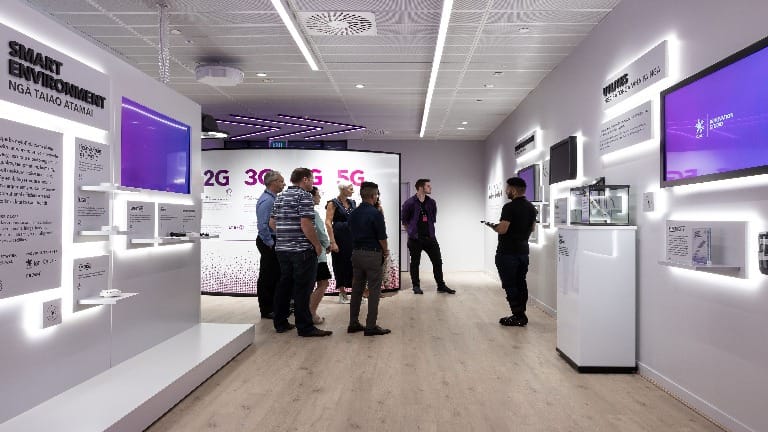Innovation studio showcases Spark wireless network

Spark has opened an innovation studio to let potential customers see how the company’s wireless networks can work for their businesses.
The studio, which is below Spark’s Auckland headquarters, was formally opened this week by digital economy minister Dr David Clark.
Clark put the opening in context. He says the government departments that responded fastest to last year’s Covid pandemic were those who were most technically advanced.
Speaking at the opening, CEO Jolie Hodson says the centre brings all Spark’s wireless networks together in a single place for the first time. Customers can test applications using 4G, 5G, Cat M1, NB IoT and LoRaWAN.
This emphasises the complementary nature of wireless networks. It can often be a case of picking the right network for the application, but there are times where different networks can work together. At the same time it underlines Spark’s ability to provide communications for any application.
Spark previously operated a similar 5G-focused innovation centre in the Wynyard Quarter. One of the lessons from that earlier showcase was that the technologies demonstrated need to cycle regularly. Spark says it doesn’t expect anything in the new studio to stay in place for longer than six months.
More data, less carbon
Hodson says Spark’s wireless technologies have the potential to help companies meet New Zealand’s goal of becoming carbon zero by 2050.
In part that’s because modern wireless technologies can use less electricity to push move bits through the airwaves than earlier technologies.
Environmental themes are everywhere. Spark divided the innovation studio into four zones; utilities management, smart environments, emerging technologies and asset management.
The emerging technology zone, shows a collaboration with car company Toyota. It uses virtual reality to give customers a taste of driving a new vehicle without the need to distribute fleets of demonstration vehicles around the country.
Water quality
Examples elsewhere include a buoy containing sensors that can be used to monitor water quality. A mussel farm on the Firth of Thames uses the buoy. Because it can keep a close watch on water conditions it means mussel farmers can harvest at the best times.
A project involving Auckland Transport and Spark’s Qrious data and analytics division connects sensors on rubbish bins, street lights and benches. The bins can report back when they are full. It means council workers can time bin collection to save fuel and trips while also keeping streets tidier. The system can turn lights on and off as needed, saving power.
Spark has gone for a practical approach to the innovation studio. Hodson says with one or two exceptions everything on show is available for use today. “It’s about closing the gap between marketing and action”.
Member discussion